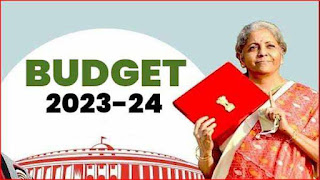Indian Budget 2023 Live Updates:
Finance minister Nirmala Sitharaman announced a number of changes in the income tax slabs in the new tax regime.
If we include all rebates, an individual will have to pay no tax on income up to Rs 7 lakh in the new tax regime.
Addressing the post-Budget press conference, Sitharaman said that the government has made the new income tax regime more attractive for taxpayers and has thus brought about 'substantial changes' in its structure for the benefit of the middle class.
She noted that the country has been waiting for a direct tax regime which is simplified and easy in compliance.
An individual with annual income of Rs 9 lakh will have to pay only Rs 45,000 as tax in the new regime.
This is only 5% of a taxpayer's income in the new regime. There is a standard deduction of Rs 52,500 in the new tax regime. The FM also said that the new tax regime would be the default regime.
The new taxation regime is now more attractive as it gives greater rebates, the finance minister said in the post-budget interaction with media.
New income tax slabs 2023 - 24:
- Up to Rs 3 lakh income there is 0% or NIL tax
- From Rs 3 lakh to Rs 6 lakh the tax rate is 5%
- From Rs 6 lakh to Rs 9 lakh the tax rate is 10%
- From Rs 9 lakh to Rs 12 lakh the tax rate is 15%
- From Rs 12 lakh to Rs 15 lakh the tax rate is 20%
- Above Rs 15 lakh the tax rate is 30%
This is the first Budget of Amrit Kaal, with these words finance minister Nirmala Sitharaman started the presentation of the last full Budget of the Modi government.
The world has recognized India economy as a bright spot, the FM said. India's growth at 7% in current fiscal highest among major economies. Indian economy on right track, and heading towards a bright future, Sitharaman said in her budget speech.
Per capita income has increased to Rs 1.97 lakh. At the same time, India's economy has grown from 10th to 5th largest in the world in the last 9 years, Sitharaman said in the Union Budget speech.
India Budget 2023 is being presented at a time when the major advanced economies in the world are crippled by a slow down and are even staring at a possible recession.
In this backdrop, the Economic Survey still expects India’s GDP to grow between the 6-6.8% range, maintaining its tag of being the fastest growing economy in the world.
What also bodes well for the GDP growth prospects is that the Survey has said that India’s recovery from the shock of the Covid-19 pandemic is complete.
Indian Railways has received a capital outlay of Rs 2.40 lakh crore for the first time ever. This is the highest capital outlay for railways, Sitharaman said.
Finance Minister Nirmala Sitharaman announced a huge rise in capital expenditure. The Union Budget has hiked the outlay on capital expenditure by 33% to Rs 10 lakh crore.
This would be 3.3% of GDP. The FM has also announced a massive increase in PM Awaas Yojana. In her Budget speech, Sithraman highlighted the continuation of the food security programme for another year and announced steps for Agri startups, fisheries and started a programme for primitive, vulnerable, tribal groups.
But, Sitharaman also has the crucial task of not just maintaining the fiscal deficit target of 6.4%, but also providing a credible road map to bring it down further in the coming years, closer to the FRBM target.

